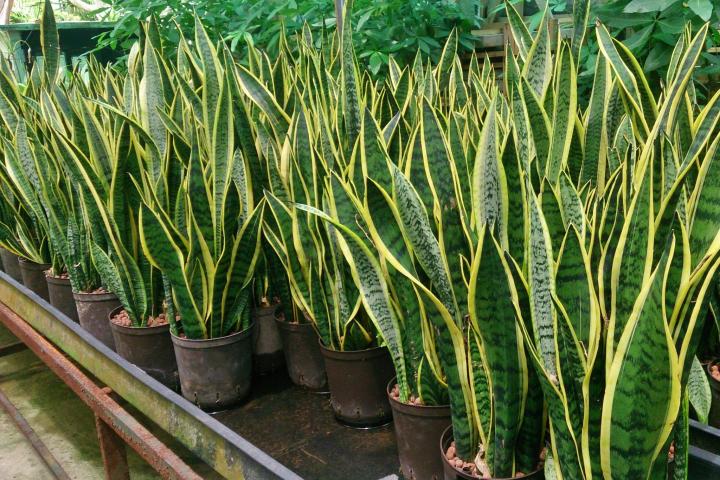
Photo Credit
Myroslava Bozhko/Shutterstock
Subhead
A Beginner-Friendly Houseplant That’s Nearly Impossible to Kill
Read Next
Types
- Dracaena trifasciata (aka Sansevieria trifasciata) is the most common species of snake plant. It has tall, dark-green leaves with light grayish-green horizontal stripes.
- ‘Bantel’s Sensation’ — Narrow leaves have white vertical stripes and grow to about 3 feet long. This variety can be hard to find.
- D. hahnii:
- ‘Bird’s Nest’ — Short, wide leaves of dark and light green form a tight nest shape like a bromeliad. Leaves only grow 6 to 8 inches long. This variety does need much light to grow well.
- ‘Golden Hahnii’ — Like the standard ‘Bird’s Nest’ but with leaves variegated along the edge in yellow.
- D. cylindrica:
- ‘Cylindrical Snake Plant’ — As its name suggests, this species of snake plant has cylindrical leaves that end in a fierce point.
- ‘Starfish Snake Plant’ — The starfish snake plant has cylindrical leaves that fan out from its base, giving it a starfish-like shape.
- D. masoniana:
- ‘Whale Fin’ — These interesting snake plants have large, wide leaves that resemble the fin of a whale breaching the water’s surface.
Gardening Products
More Like This
I started with five 3” snake plants that I placed in a long rectangular pot. For five years it grew and grew with weekly watering. Started to flower this past year. I finally decided to break it down and have potted 19 pups. And three shoots remain for me to keep the original plant going. I am amazed at how hearty this plant is!
I am pleased to see that most of the people leaving comments are using the common name, Snake Plant. Dear Ms. Catherine Boeckmann, would you please help by avoiding references to the plant's other, unfortunate name. We have worked to retire other problematic plant names, e.g., choosing Inch Plant ((Tradescantia) that avoids an ethnic reference. Let's do the same for Sansevieria. Thank you. Edie
All that wokeness is what got us in this mess in the first place. Mothers in laws tongue is just fine.
I bought a snake plant from a cutting that had light green of the sides of the leaf, mine are growing & propagating, but all leaves are only green. Help
Hi Debbie,
When a new snake plant is created from a cutting its unique foliage patterns, such as variegation, mottled leaves, and different colored edge, are usually lost and most plants will end up with single green color. In order to propagate a new plant that looks exactly like the original—with the same leaf coloring—you need to divide the original plant.
Hope this helps!
Very good
All the guides I have found say to plant the draceana at the same depth it was in the old pot. I think it was too deep in the old pot -- another time, too shallow. Please please please please tell us the corm/root should be X inches below the surface. Or the base of the growing leaf should be X inches below or at or above.
55 years ago when my daughter was born, my husbands buddies from college sent me a snake plant. I cannot tell youhaw many people have received "pups" from this plant and it goes on and on. I can also be propagated by cutting a leaf and sticking that in damp vermiculite or even just water and placing in indirect light where it will root and also go on and on if cared for properly.
Snake plants
Please check, the name of this plant was changed to Dracaena Trifasciata.
Please update your article.
Thank you, M
Who Changed the name to Dracaena. It has never been a Dracaena. It is considered a Succulent and a member of the Lilly Family, hence the low watering needs. People make up names. But all my books and research do not say it is a Dracaena. Sansevierias are a native of Africa more particularly, laurentii is native of the N.E. Congo in Africa. "Variegated snake plant" or "Goldband Sansevieria" It can grow to 1/2 to 1-1/2 meters high.
- « Previous
- 1
- 2
- …
- 10
- Next »











Comments